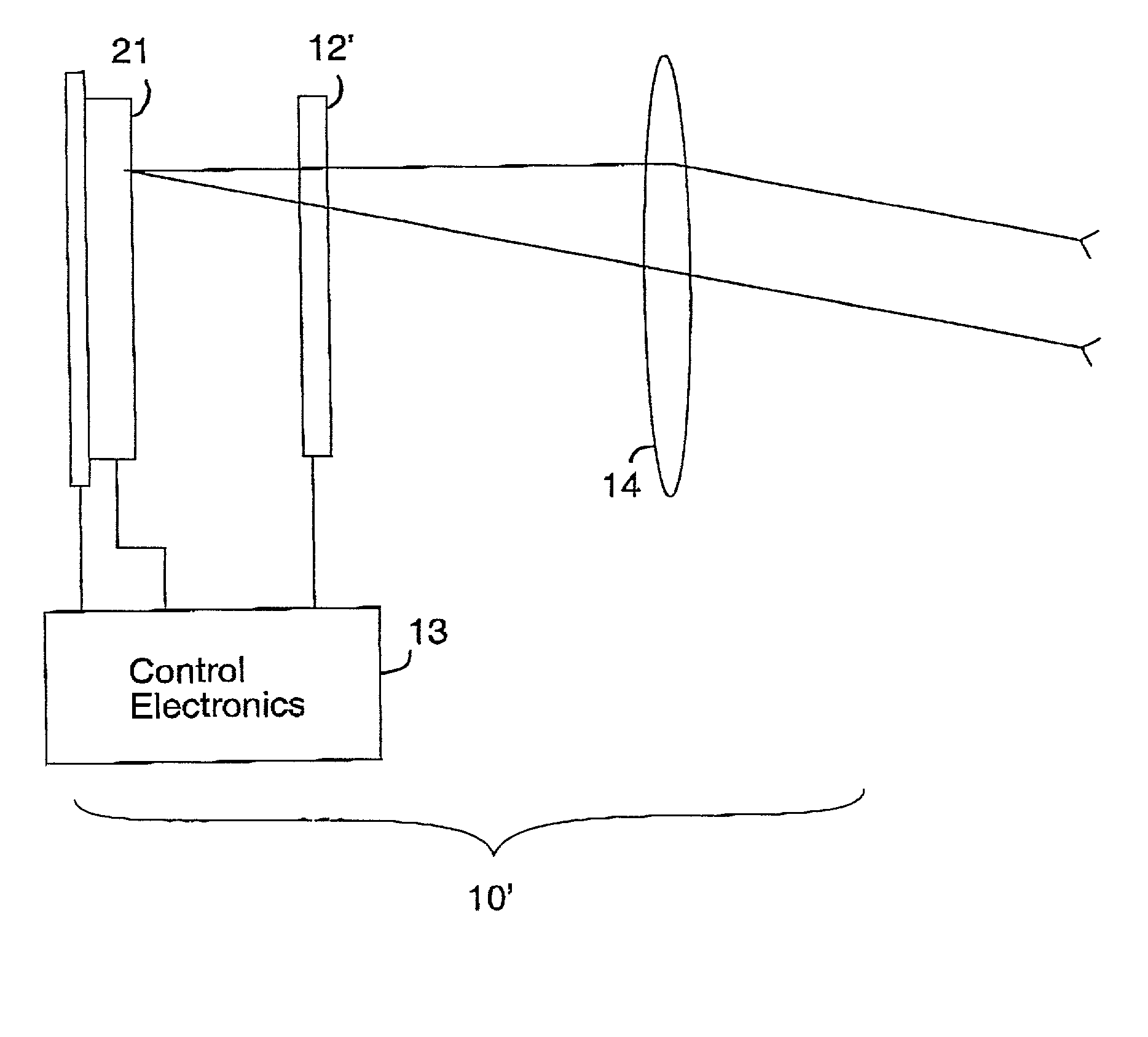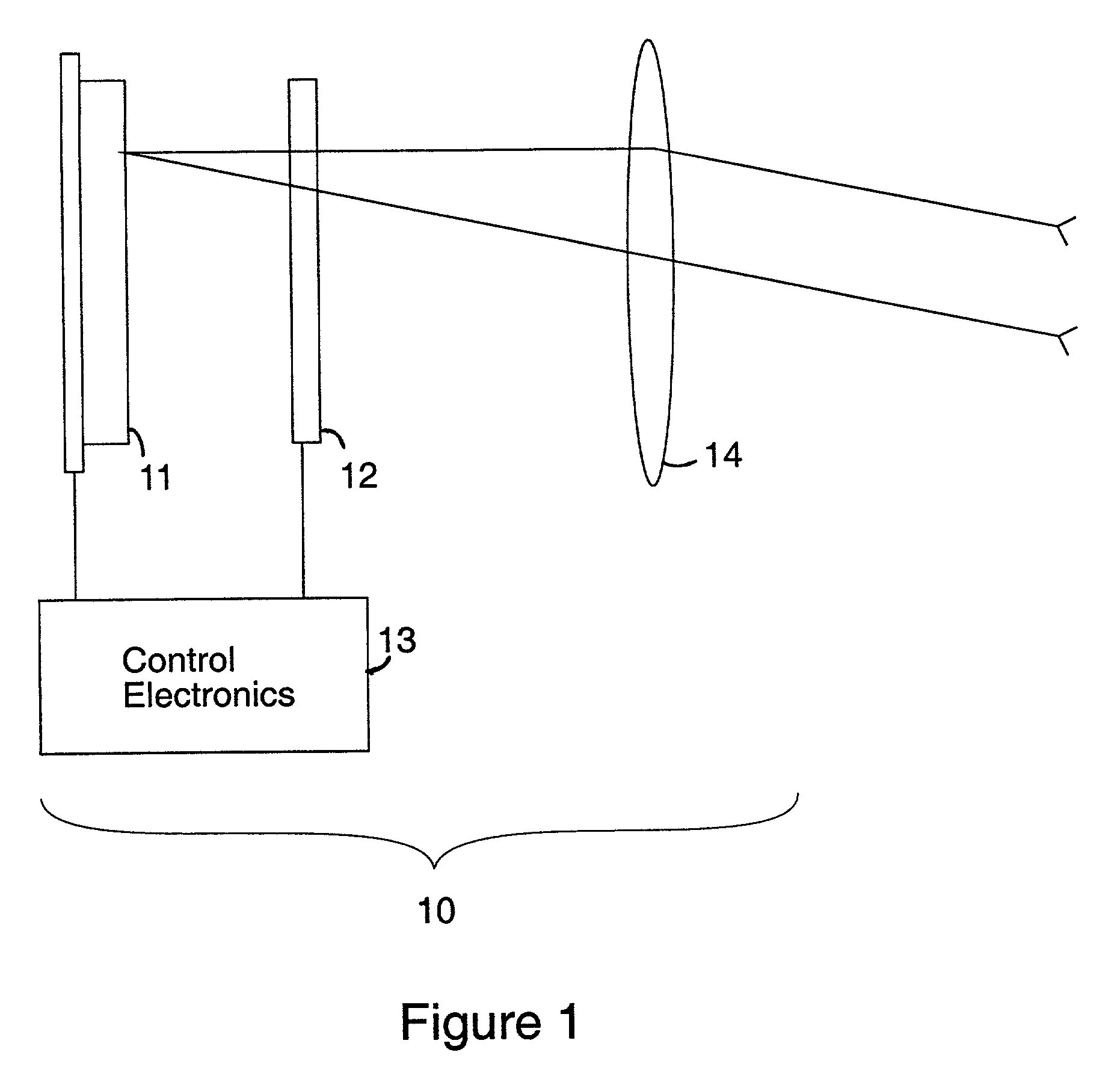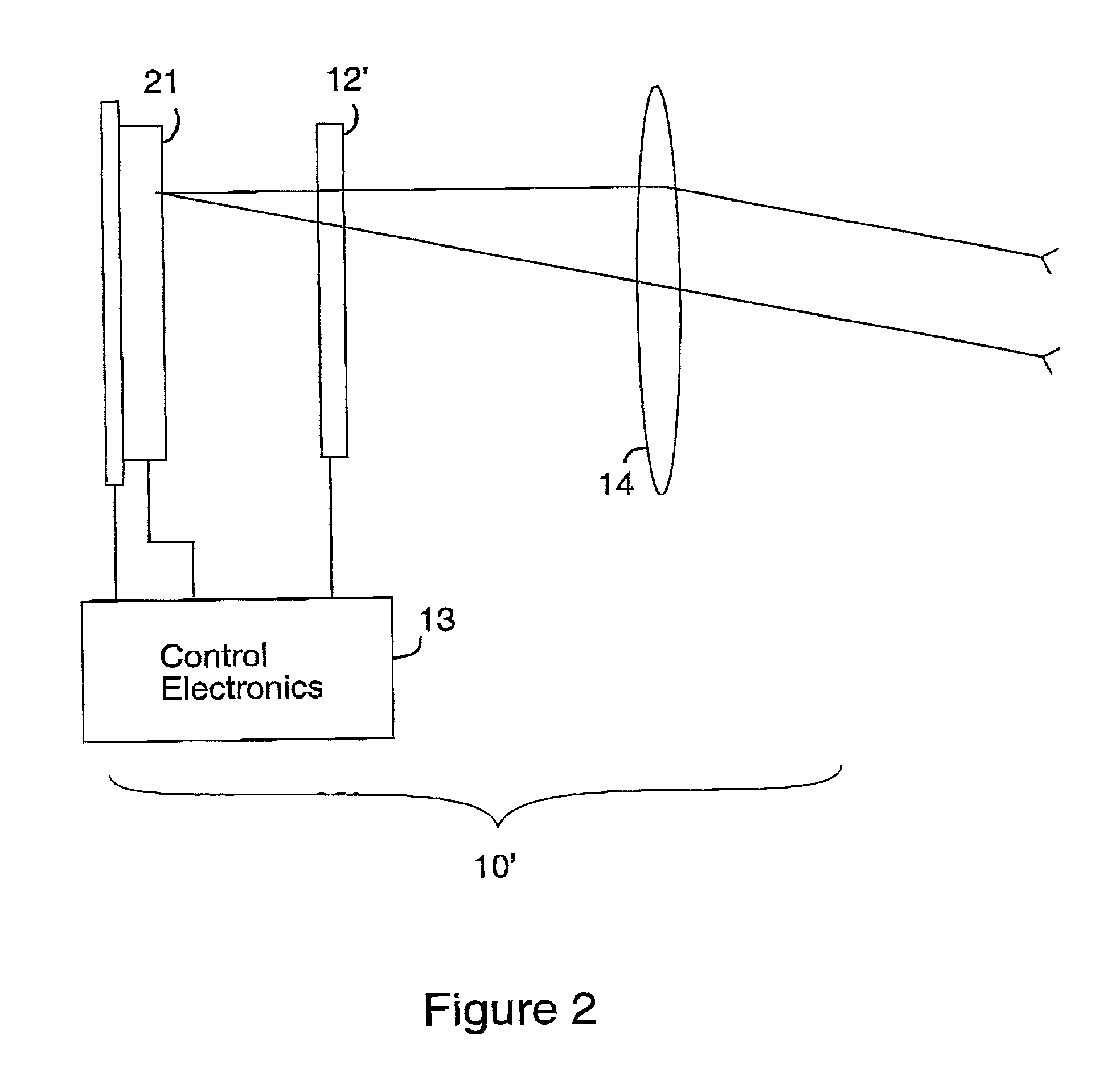Imaging system using color sensors and tunable filters
a color sensor and color filter technology, applied in the field of color imaging systems, can solve the problems of insufficient information, inability to accurately match the image produced by the detector to the human eye's perception, and inability to accurately reproduce color for real-world samples
- Summary
- Abstract
- Description
- Claims
- Application Information
AI Technical Summary
Benefits of technology
Problems solved by technology
Method used
Image
Examples
Embodiment Construction
[0034] In this description, certain terms are used interchangeably. In particular, the terms "sensor" and "detector" are both used to denote a photodetector that provides at least a one-dimensional image of a scene, and more commonly, a two-dimensional image. It is specifically intended that this term include detectors comprising three photodetectors and a trichroic prism in the arrangement widely used for medical imaging and pro-level video equipment. The terms "retarder" and "waveplate" are used to denote an optical retarder that has a certain retardance which may further be described in terms of the amount of retardance. For example, a .lambda. / 2 waveplate is a retarder which exhibits an optical retardance of one half wave for light of a specified wavelength, or when no wavelength is specified, for light generally within the operating range of the system. The term "light" is used to denote visible light, infrared light, and ultraviolet light. Although the examples are drawn from ...
PUM
 Login to View More
Login to View More Abstract
Description
Claims
Application Information
 Login to View More
Login to View More - R&D
- Intellectual Property
- Life Sciences
- Materials
- Tech Scout
- Unparalleled Data Quality
- Higher Quality Content
- 60% Fewer Hallucinations
Browse by: Latest US Patents, China's latest patents, Technical Efficacy Thesaurus, Application Domain, Technology Topic, Popular Technical Reports.
© 2025 PatSnap. All rights reserved.Legal|Privacy policy|Modern Slavery Act Transparency Statement|Sitemap|About US| Contact US: help@patsnap.com



